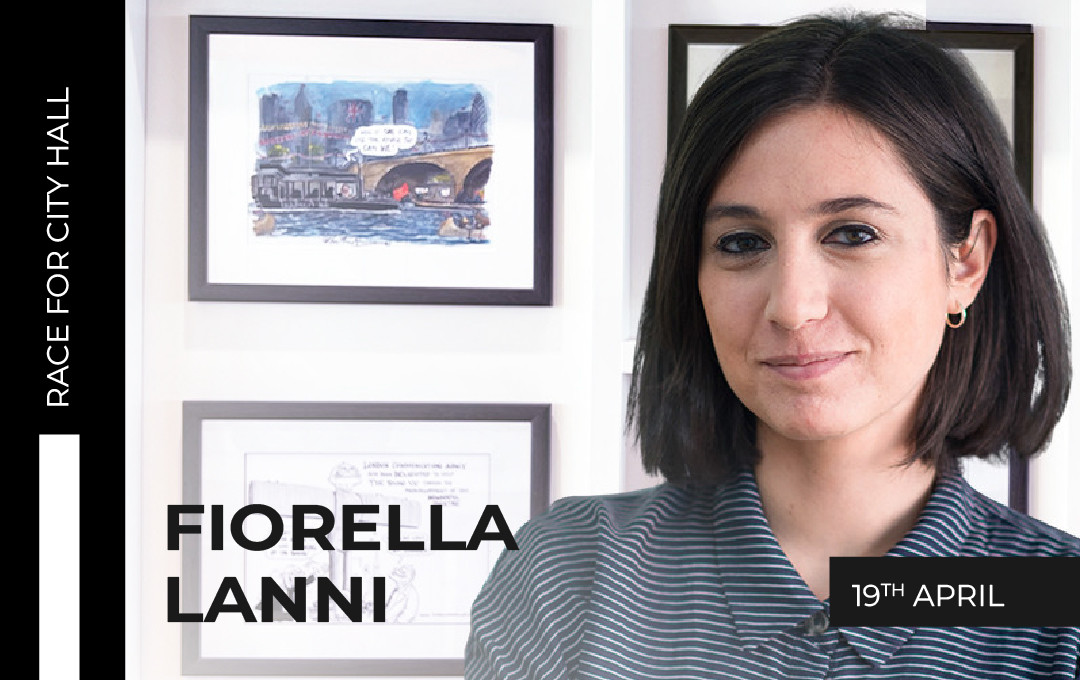Posted: 18.04.24
Race for City Hall: London’s air quality on the ballot
As a health-conscious woman in her early thirties, the state of London’s air quality strikes a personal chord with me. Every commute on the London Underground and as I walk around the streets in the city centre inevitably make me wonder about the air we breathe. But this isn’t just a personal matter; it affects the health and wellbeing of every Londoner.

With mayoral elections looming, the issue of clean air takes centre stage. The current Mayor has made it a key priority, and it has become a charged topic in some quarters. The next Mayor will have the opportunity to shape policies that directly impact air quality, influencing everything from transportation to urban planning, championing environmental causes and taking bold action to tackle air pollution. It's a responsibility that cannot be taken lightly.
Are current policies driving sustainable progress?
When political expediency often drives a focus on the short-term, there is a need for a long-term vision for a greener London. The London Plan, the strategic framework setting out economic, environmental, transport and social parameters for development, stands as an example of how sustainability can persist beyond political cycles and how consistency in policies can lead to success.
Back in 2003, Ken Livingstone introduced London's groundbreaking Congestion Charge, and placed the climate agenda and air quality at the heart of his campaign, with the view of tackling congestion, even though at the time there was little talk about how this would bring climate and air quality benefits. His successor, Boris Johnson implemented a bike-sharing programme, promoting active travel across the capital. Following his declaration of a climate emergency in 2018, the current mayor, Sadiq Khan, adopted the ambitious target of London being net zero carbon by 2030, putting climate change top of the agenda.
Under Khan’s leadership, initiatives such as the Ultra Low Emission Zone (ULEZ), Air Quality Positive, and the expansion of cycling infrastructure, have aimed to reduce air pollution and further promote active travel. And evidence would suggest this has had some success. According to a new report published by the Greater London Authority and Transport for London in March 2024, overall air pollution concentrations have fallen by 65% in central London since 2016, 53% in inner London and 45% in outer London. These significant improvements have been largely attributed to ULEZ, first introduced in April 2019 covering the same area as the Congestion Charge Zone. Then subsequently extended to cover the area within the North and South Circular roads in October 2021, then to cover all London boroughs in August 2023.
ULEZ – a politically divisive matter
To date, London’s ULEZ stands as the world’s largest clean air zone. Yet, the implementation has sparked considerable controversy – particularly in outer London – making it quite possibly one of the most contentious environmental policies in the UK. The contention has seen ULEZ develop into a key political battleground, further dividing opinions and shaping mayoral campaigns.
Despite its effectiveness for improving air quality, policies like ULEZ are not pain-free. Many Londoners have had to change behaviours or invest money in new vehicles to meet the new requirements.
The question arises: how can policymakers improve air quality while building sustainable and equitable cities for the long-term? Part of the answer lies in raising public awareness about the critical importance of air quality, and the direct impact on our health and wellbeing of filthy air. Of course, this is not an easy task to achieve, and requires Top of Form a shared effort across both the public and private sectors.
From a built environment point of view, discussions around air quality must begin at the earliest stages of urban planning. Developers should work to integrate air quality standards which benefits their customers and surrounding communities. When designing housing, commercial, workplace, or education buildings, air quality needs to be at the forefront of professionals’ minds. Ultimately, good air quality serves as an incentive for people to choose to live in areas characterised by a pleasant environment.
In the broader context of sustainability and environmental protection, policymaking is becoming increasingly complex. To meet net zero goals, political leaders are faced with the very difficult task of trying to change public behaviour, particularly concerning consumption and transportation habits. Convincing voters of the necessity and value of these changes – when it can come at a personal cost – will undoubtedly be challenging, both from a built environment and political perspective. Leveraging data and open-source modelling of air quality can play a crucial role in visually illustrating the tangible impacts of air quality. This approach can enhance public understanding, support behavioural change, and inform policymaking decisions to foster a greener, healthier environment.
Despite progress, challenges persist, underscoring the need for long-term commitments on climate action in the face of political shifts. The voters do face a broad range of candidates come polling day, some with differing views on the importance of tackling climate change and improving air quality, or at least with different solutions to the problem. As the next Mayor takes office, it’s important to maintain momentum towards sustainability.
